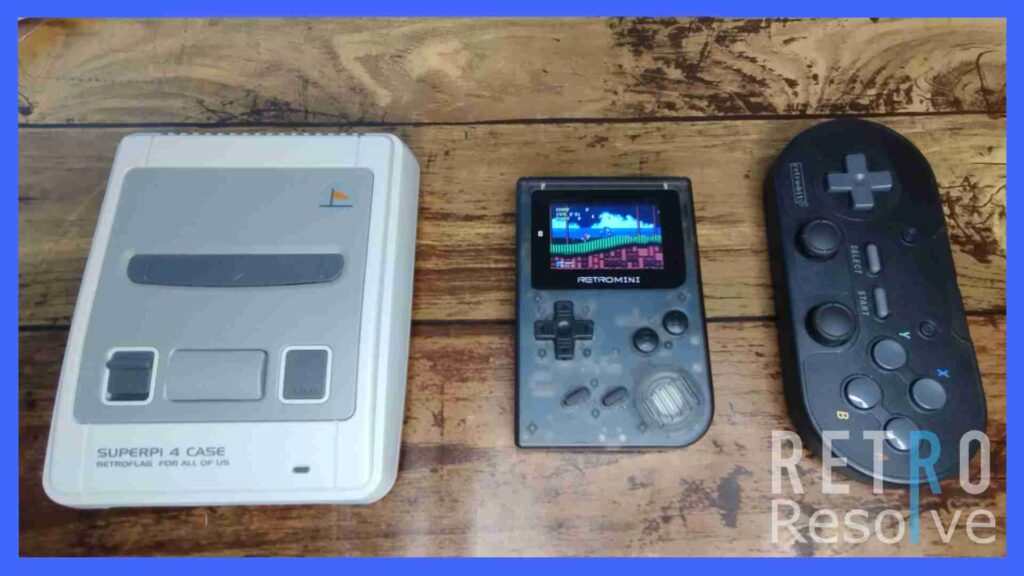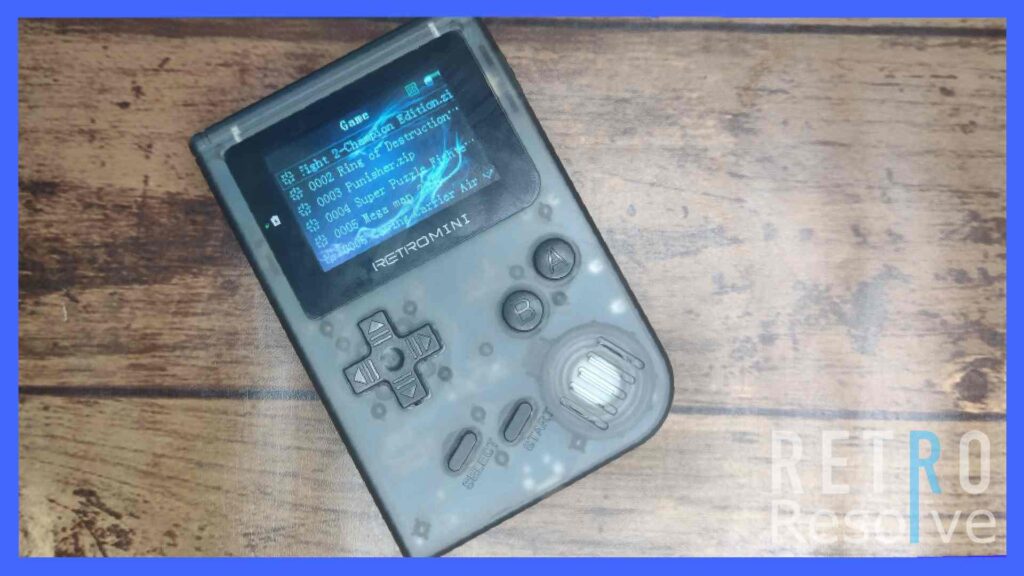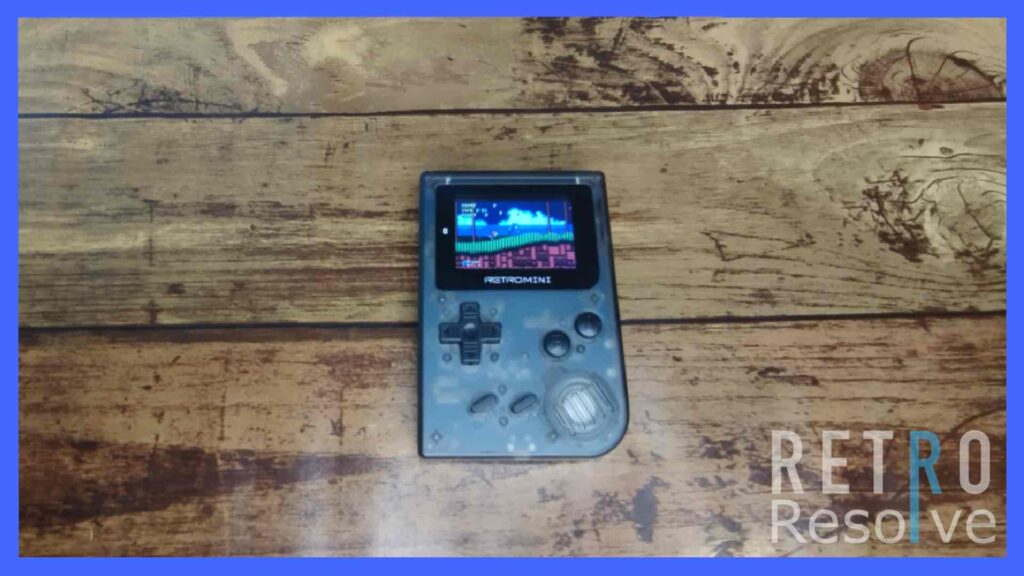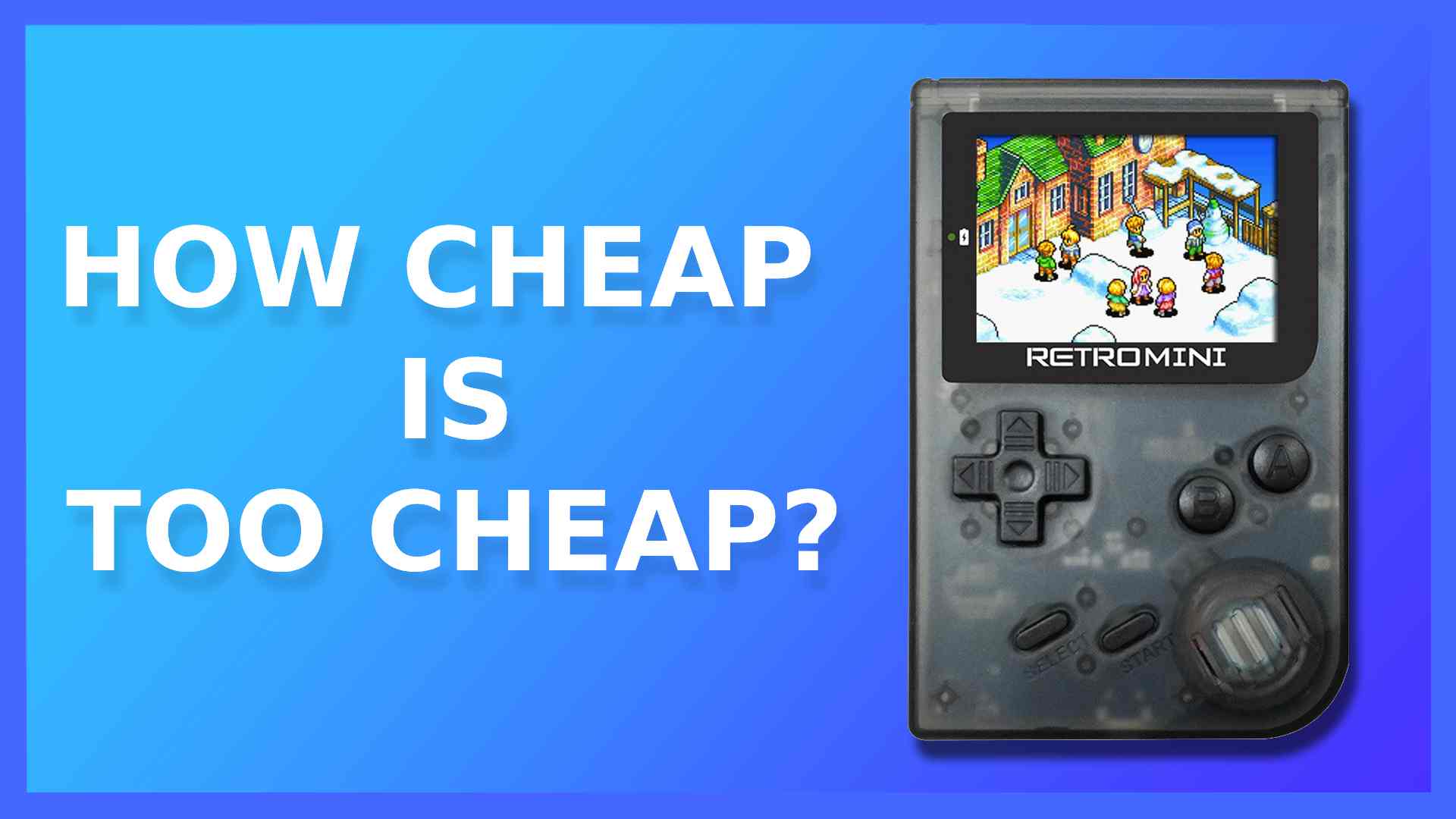How cheap is too cheap? That’s the question I’ve found myself pondering while reviewing the Retromini. The retro handheld market has blossomed over the past few years, and choice has never been greater. But as prices continue to skyrocket, the need for a legitimate cheap handheld continues to grow.
At one of the lowest price points out there, the Retromini should be a steal. At least that’s the theory. In reality, it’s just not very good.
Retromini Overview

The Retromini exists in a highly competitive market. While the likes of Ayn, Powkiddy, Retroid, or even Valve have become household names, there are always going to be affordable emulation handhelds to offset the big name brands.
The question we’ve got here is can the Retromini, a device from back in 2018 that’s still sold to this day, offer up something worthwhile at a lower price point? As consoles like the Steam Deck come in at around the £300 mark, and companies like AYA offer up high-end Windows consoles for well over £1000, the need for a low-cost device is becoming more and more apparent.
In terms of the what’s what, the Retromini is an affordable emulation device designed to resemble the Nintendo Game Boy. Coming in at $30/£35, it’s much cheaper than Anbernic’s RG350 series ($90/£80), and a more much attractive option than the Ayn Odin Lite’s $187/£158 price tag. Again, at least in theory.
In terms of value, the Retromini sounds like a great deal. It’s almost a third of the price of the RG350 and costs less than a brand-new video game, so what’s the catch?
The catch is that it’s rubbish. When it launched in 2018, competition wasn’t quite as rampant. But even then there were better options out there in the form of the 3DS or PS Vita. By today’s standards, the Retromini has far too many drawbacks to be worth considering.
Operating System

The Retromini ships with a custom operating system that’s slightly better than what we see in the Nokia N-Gage, but nowhere near as slick as it should be.
Modern systems normally either opt for Linux, Android, or Windows. The reason being those three operating systems yield a tonne of flexibility and customisation options. They’re also perfectly suited to running emulators.
The Retromini’s operating system feels and looks like something pulled straight out of an early 2000’s mobile phone. It’s pixelated, ugly, sluggish, and doesn’t offer up any kind of game sorting.
Your options for gaming here are the internal memory or the SD card. Click on one and you’re transported to a text list of games with fuzzy images. I should note, a lot of the images don’t even match the games. The New Super Mario Bros. cover art sits alongside a copy of Super Mario Bros. for the NES, Sonic Adventure’s box is a header image for Sonic Advance, and so on.
It sure is a choice to get the wrong box art and then shrink it down to a size that looks like it’s been through a blender. I simply do not understand it.
I’d love to say sorting games is at least easy but it’s a massive chore. There aren’t options to favourite games or sort them by console. Instead, it’s just a text list of hundreds (or thousands on the memory card) of games users need to scroll through every time to find what they want. Oh, and they’re not sorted alphabetically. So if you find a game you like, have fun trying to find it again.
Elsewhere in the menu there’s a music player to play music through the tinny speakers, an image viewer to view your favourite images in the lowest resolution possible, and a reader of some sort.
Honestly, I haven’t seen such a poorly designed operating system in a while, and I’m someone who’s tried out multiple custom Raspberry Pi operating systems for emulation. It boggles the mind who thought this was a good idea.
I know the reason for the corners cut has to be to keep costs down. But even at this price point it’s not good enough.
Best of all, this is only the start of our problems.
Performance
Given the low internal power of the Retromini, it’s no surprise this device struggles with even the most basic games.
During my testing, the compatibility ranged from playable to hard crashes. Basic stuff, like NES, mostly worked without any issues. But the moment more power-hungry systems like Game Boy Advance or even Sega Genesis/Mega Drive came into the mix, the system wasn’t able to keep pace.
I’ll give you a few examples. Playing through Sonic the Hedgehog results in sluggish speeds and stalling every few steps. In a similar vein, some of the Sonic Advance games lock up the console, and require the user to reboot the whole system.
Aside from constant cut-up or nonsense text in games, another weird bug I found was in Street Fighter 2 when Ryu would throw a fireball. Instead of it going from left to right of the screen in a straight line, it’s now diagonal and Ryu briefly chops himself in half. How is this even a thing?
There are over 1000 games included with the Retromini, and while the majority of the games are playable, the fact that select games considered easy to emulate aren’t able to even boot is a massive disappointment.
This is where the cost factor comes back in. The Retromini is as cheap as they come, but when the internals are also cheap, performance isn’t ever going to be great. If you’re coming at the Retromini expecting full-speed emulation for the consoles it claims to play, this isn’t the console for you.
Comfort and Feel

While this Retromini review so far has been a burial, there’s very little to bemoan when it comes to how this thing feels.
The plastic used doesn’t feel cheap and tacky. There’s every chance it is, but in the hand it doesn’t feel like a cheap machine. I wouldn’t say it’s premium either, but for the price, it’s serviceable.
As for comfort, it’s fine. When you downsize a Nintendo Game Boy to just a few inches in length, of course there are going to be issues. But in terms of button placement, it works. It is cramped, absolutely, and hitting the L and R buttons requires crab hands. Still, for the size of the device, there aren’t many other ways of doing the design, so it makes sense.
One area of concern worth mentioning is the lack of buttons. On the Retromini there are two face buttons and two flat shoulder panels on the back. This is fine for 8-bit systems, but the moment games like Street Fighter 2 comes in, the lack of buttons really ruins the experience.
What’s even more bewildering is how the buttons operate. In Street Fighter 2, you’ve got three punches and one kick. Why couldn’t we have two kick and two punch buttons? Or at least the option to remap the controls to something more sense-making. It’s so bizarre.
Audio Quality
It’s bad. Real bad. Not only are emulators throwing out choppy sound due to there not being enough power under the hood, the speakers are tinny and result in a less-than-pleasant listening experience.
Not only that, the volume wheel on the side of the console doesn’t have enough options. The choices here are off, really quiet, or several levels of really loud.
What Console Can the Retromini Emulate?
The Retormini is capable of emulating up to and around the 16-bit era. As it struggles with several systems, getting more out of the console isn’t likely. I wouldn’t expect PS1 or above to be possible at all, ever.
- Nintendo: NES, SNES, Game Boy, Game Boy Colour, Game Boy Advance
- Sega: Master System, Genesis/Mega Drive, Game Gear
- Mics: Low-end Arcade machines
What’s in the Box
The Retromini comes alongside an instruction manual, a USB charging cable, and an 8GB microSD card which houses the lion’s share of the games.
Retromini Price
At the time of writing, the Retromini comes in at $30/£35.
Alternatives to Consider
Thankfully, there are a host of more powerful alternatives out there depending on your budget.
Let’s assume you’re after something affordable that’s able to provide much better compatibility and offer up a more premium feel. In that case, go with the Anbernic RG351. This device plays up to PS1, the screen is great, there are two analogue sticks, and you can even port some games like TMNT Shredder’s Revenge. Plus it costs $110/£75, which, given how great this console is, is worth every penny.
If you don’t mind spending a little more and want to be able to play up to PS1 and some N64 and Dreamcast titles, the Anbernic RG353P is worth considering. That console comes in at $160/£132.
How We Tested the Retro Mini
To test out the Retromini, I purchased the black version from Amazon and spent around 12 hours playing it to see what it was capable of. In that 12 hours, I averaged a little under six hours of usage per charge from the battery.
Retromini Review: Conclusion
Is the Retromini worth it? Not really. Yes, it’s very affordable, and as a gift for someone younger, maybe there’s a place for it. But even then, this isn’t a good way to experience classic games.
The two-inch screen is fuzzy, the operating system is archaic, and game compatibility and performance aren’t anywhere near where they should be. There are better alternatives, and yes they cost more, but the jump in quality is remarkable.
With the modern emulator handhelds you’ve got an IPS, crisp screen, greater compatibility, and the operating systems are more user-friendly.
The Retromini is a cheap console with a cheap price, and judging it by today’s standards, it isn’t good enough when there are so many better options out there. Even at the shallow $30/£35 price point, it’s just not worth it.

